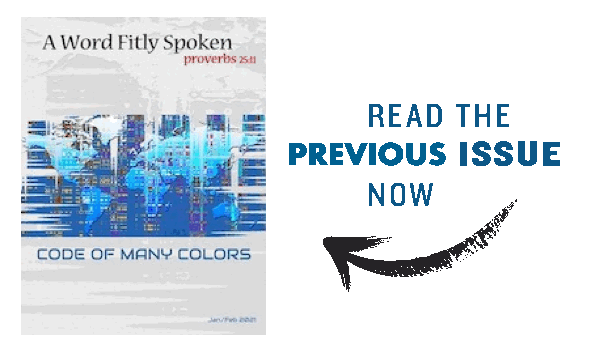
Photo illustration by Slate. Photos by GaudiLab/iStock/Getty Images Plus and macniak/iStock/Getty Images Plus
How a Dead Professor Is Teaching a University Art History Class
TAMARA KNEESE
The fact that the dead can literally replace living faculty members is a perfect metaphor for what is happening across higher education.
When a Concordia University student went to email his professor recently, he found out something startling .
“HI EXCUSE ME, I just found out the the prof for this online course I’m taking *died in 2019* and he’s technically still giving classes since he’s *literally my prof for this course* and I’m learning from lectures recorded before his passing.” In a follow-up tweet , he wrote, “I mean, I guess I technically read texts written by people who’ve passed all the time, but it’s the fact that I looked up his email to send him a question and PULLED UP HIS MEMORIAM INSTEAD that just THREW ME OFF A LITTLE.”
In a statement from Concordia, the university confirmed that François-Marc Gagnon, a longtime lecturer in the Department of Art History and prominent scholar with a large body of written work, created the lectures as part of Concordia’s online course catalog, eConcordia. In other words, Gagnon’s lectures are from a pre-COVID-19 era and were intended for a dedicated online class, not the in-person-designed courses that have moved online as a result of the pandemic. Technically, Marco Deyasi is now listed as the instructor of record, along with two teaching assistants who also interact with students and grade their work. Gagnon’s lectures continue on as a “teaching tool,” according to the Concordia spokesperson.
All around us, the dead perform postmortem work. In the past, I’ve written about the ways people’s likenesses or creative materials may live on beyond them, perhaps allowing corporations, platforms, or other institutions to profit. Thanks to digital technologies, dead celebrities can appear in ads, dead musicians can play at live shows, and individuals’ social data can manifest as chatbots. In addition to journal articles and syllabi, college professors like me might have a collection of video lectures and recorded talks that could potentially outlive us, perhaps instructing students and captivating audiences after we die. Does the university really have the right to profit from the lectures of a dead person? Or to charge students full tuition when they cannot access their professor except through a spirit medium?
This case may be particularly egregious, but it intersects with larger questions about copyright and control over faculty members’ online course materials and the various ways faculty labor within higher education is degraded and devalued. During the pandemic’s first days, contingent and tenured faculty members alike quickly adapted their syllabi and moved their course materials online, offering remote classes so instruction could safely continue. As weary professors have lamented, teaching online is, in many respects, more labor-intensive than being there in person: It involves recording, uploading, and transcribing video lectures; responding to asynchronous discussion posts; and fielding more questions from confused students. The pandemic has also brought new challenges , with faculty teaching from cramped quarters and caring for young children at home. Additional workload expectations are even more of a problem for part-time faculty members, who are expected to perform this additional work without more compensation. Despite increased workloads, some universities are cutting faculty positions , especially adjunct and other contingent positions, and reducing faculty pay. With an abundance of curated class materials uploaded to university drives, critics have flagged problems related to intellectual property rights and the repurposing of recorded lectures: Will faculty essentially automate away their own jobs by recording lectures that can be recycled year after year?
The fact that the dead can literally replace living faculty members, and that the work of grading can be carried out by TAs, is a perfect metaphor for what is happening across the sector. TAs standing in for a dead renowned professor is a different form of what researchers Mary L. Gray and Siddharth Suri refer to as ghost work , or the globalized and precarious underclass that allows the web to function. In some ways, higher education is already a scam. Tenured faculty might teach a few classes, but student work is often graded by underpaid graduate student teaching assistants or graders. At prestigious research universities, discussion sections are also led by graduate students. Many more classes are taught by part-time faculty, who are cobbling together a living, or other short-term contracted faculty, like visiting assistant professors or postdocs. Digital technologies like recorded video lectures allow for the appearance of continued traditional instruction while cutting costs.
Meanwhile, faculty are being asked to fill in for sick or dead colleagues . Many schools, including mine, have instated a new mandatory buddy system in which you name an understudy, a colleague who can take over your classes if you fall ill, become incapacitated, or die of COVID-19. The stories of faculty members who continue to teach while ill and even die on camera, such as Paola De Simone , a professor in Buenos Aires who died from COVID-19 complications while in the middle of Zoom teaching, are part of this devaluing of academic labor and life. Not to mention the fact that in many places, faculty are forced to teach in-person classes despite the risk to themselves, their families, and their students. Some graduate students I have spoken to say they have been told they should sacrifice themselves and teach in-person classes since they are, at least in theory, young and healthy. In other cases, graduate students are also asked to fill in as instructors for tenured faculty members who get sick or die.
These COVID-related developments are indicative of an ongoing relationship between academic precarity and death. Non-tenure track faculty are disproportionately women and people of color. Often, contingent and more junior faculty are the first to be laid off , erasing recent gains in diversifying faculty. Stories abound about adjuncts living on food stamps or sleeping in their cars. As I have argued elsewhere , contingent academic labor is akin to platform-based gig work. Thea Hunter was a Black woman adjunct professor in New York who died from health problems exacerbated by the stress of precarity and left untreated because of her lack of insurance. A brilliant scholar, she had a Ph.D. from Columbia University and had at one point been on the tenure track, but institutional racism conspired against her. Several years prior to Hunter’s death, Margaret Mary Vojtko , an adjunct professor of French at Duquesne University, died destitute at 83 while undergoing radiation therapy for cancer and living without stable housing. Such stories received a lot of shares and gained traction in the news at the time but did little to change the system.
And it’s a system that doesn’t just fail its instructors—it also fails the students. Teaching is more than the sum of lectures, syllabi, and other course content. Pedagogy is more than grading. Education relies on informal relationships and networks: letters of recommendation, serendipitous introductions, moments of encouragement, and conversations during office hours, whether in a physical office, a coffee shop, or a Zoom room. As the person who posted the original Concordia tweet noted, students appreciate talking to faculty and developing long-standing relationships with them.
To be sure, online classes bring education to people with unpredictable schedules, disabled people, international students, and lower-income students. Not so long ago, massive open online courses offered a glimpse of more accessible, cheaper forms of education, although the hype quickly faded because students often failed to complete such courses and the rhetoric around democratization mostly unrealized. But MOOCS are quite different from emergency-prompted remote learning scenarios or other dedicated online classes. A Zoom class can emulate many features of the in-person classroom, including breakout rooms, seminar-style discussion, virtual guest speakers, and remote film screenings. Academic labor advocates suspect that the once- dim prospect of MOOCs looks more feasible when most or all instruction takes place over Zoom. To make more money, universities could decide to release large-scale version of their existing classes, targeting wider demographics. They could repurpose all of the previous digital lectures and online content that faculty have created.
Some universities have already made moves in this direction. Purdue University , for example, adopted a new IP model that makes it possible for the university to maintain rights to courseware designed for distance or e-learning, even if the faculty member leaves Purdue. While online classes and recorded lectures predate the pandemic, more and more faculty at all kinds of institutions are now creating video lectures for their asynchronous classes. Asynchronous class offerings are crucial for a variety of reasons, especially during the pandemic. Students are in a variety of time zones and have different learning needs. Some may miss official Zoom class time because of problems with connectivity or other issues related to their living situations. Asynchronous lectures and online class materials can also be more accessible for students with disabilities or students who fall ill. But the growth of asynchronous classes during the pandemic has raised new concerns. Who controls and owns all of the content that faculty are putting online? With Zoom and other proprietary software becoming more central to university education than ever, there are additional worries over platform-based surveillance of both students and faculty—particularly with respect to creepy remote proctoring tools—as well as censorship
Given this moment where academic labor rights and expectations are in flux, academic labor unions should address not only the health of their members but also the intellectual property produced by faculty as part of their university positions. Traditionally, faculty get to maintain control of their syllabi and other course materials, but the line is fuzzy when it comes to online materials such as recorded lectures. I was taken aback while reading over a book contract and seeing that if I died, the press could enlist someone to finish the book on my behalf. That struck me as morbid, and also unlikely: Could someone really “take over” my writing after my death? Would they find someone in my field to sort through my messy Word documents and writing fragments on Google Drive, or would they have someone close to me do that labor for free? Other digital assets that persist after death may be tied to workplaces, like email addresses, shared file drives, and LinkedIn profiles. If I die, I would prefer that my recorded lectures and other artifacts related to my job go to my next of kin, not my employer. I have no desire to be a zombie instructor.

